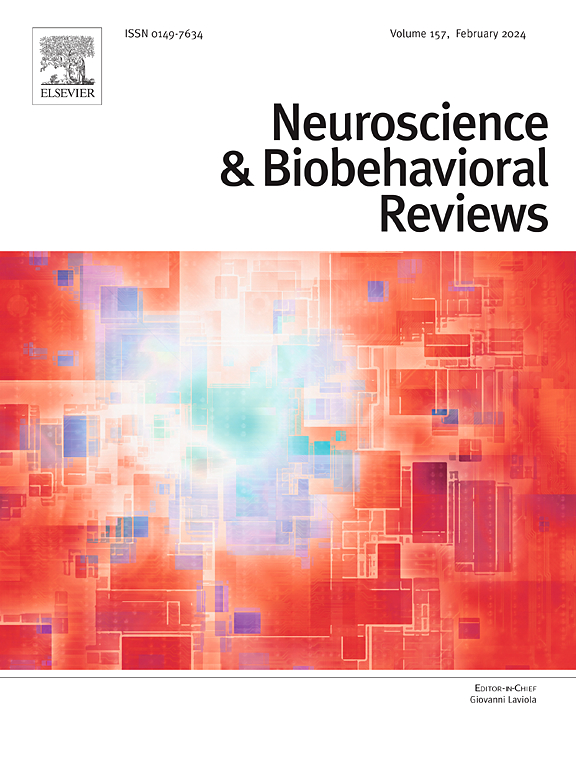实验小鼠的筑巢行为:多功能作用和神经机制。
IF 7.9
1区 医学
Q1 BEHAVIORAL SCIENCES
引用次数: 0
摘要
在脊椎动物物种中,筑巢是一种多功能且进化保守的行为,在休息、体温调节和后代照顾中起着关键作用。在实验室小鼠中,筑巢是在标准的居住条件下自发发生的,这为研究由内部状态和环境背景调节的先天行为提供了一个行为学上相关的窗口。虽然筑巢被认为是一种天生的行为,但新出现的证据表明它的可塑性:它是由经验、荷尔蒙状态、环境温度和睡眠压力塑造的。此外,筑巢对应变差异、衰老、压力和神经系统疾病敏感,并可能作为认知、情感和感觉运动功能的稳健行为读数。它也可以为实验室小鼠的总体健康和福利提供有价值的指标。我们描述了筑巢的四种主要环境——睡眠前、体温调节、亲代和怀孕期间的准备,并描述了涉及大脑皮层、下丘脑和脑干的不同神经基质如何在每种环境中不同地参与筑巢。这篇综述综合了目前关于动物行为学、生理学和实验小鼠筑巢行为的神经回路的知识。本文章由计算机程序翻译,如有差异,请以英文原文为准。
Nest-building behavior in laboratory mice: Multifunctional roles and neural mechanisms
Nest-building is a multifunctional and evolutionarily conserved behavior across vertebrate species, serving critical roles in rest, thermoregulation, and offspring care. In laboratory mice, nest-building occurs spontaneously under standard housing conditions and provides an ethologically relevant window into innate behavior modulated by internal state and environmental context. Although nest-building is regarded as an innate behavior, emerging evidence demonstrates its plasticity: it is shaped by experience, hormonal state, ambient temperature, and sleep pressure. Moreover, nest-building is sensitive to strain differences, aging, stress, and neurological disorders, and may serve as a robust behavioral readout for cognitive, affective, and sensorimotor function. It may also provide a valuable indicator of general health and welfare in laboratory mice. We delineate four primary contexts for nest-building—pre-sleep, thermoregulatory, parental, and preparatory during pregnancy, and describe how distinct neural substrates involving the cerebral cortex, hypothalamus, and brain stem, are differentially engaged in each context. This review synthesizes current knowledge on the ethology, physiology, and neural circuits underlying nest-building behavior in laboratory mice.
求助全文
通过发布文献求助,成功后即可免费获取论文全文。
去求助
来源期刊
CiteScore
14.20
自引率
3.70%
发文量
466
审稿时长
6 months
期刊介绍:
The official journal of the International Behavioral Neuroscience Society publishes original and significant review articles that explore the intersection between neuroscience and the study of psychological processes and behavior. The journal also welcomes articles that primarily focus on psychological processes and behavior, as long as they have relevance to one or more areas of neuroscience.

 求助内容:
求助内容: 应助结果提醒方式:
应助结果提醒方式:


